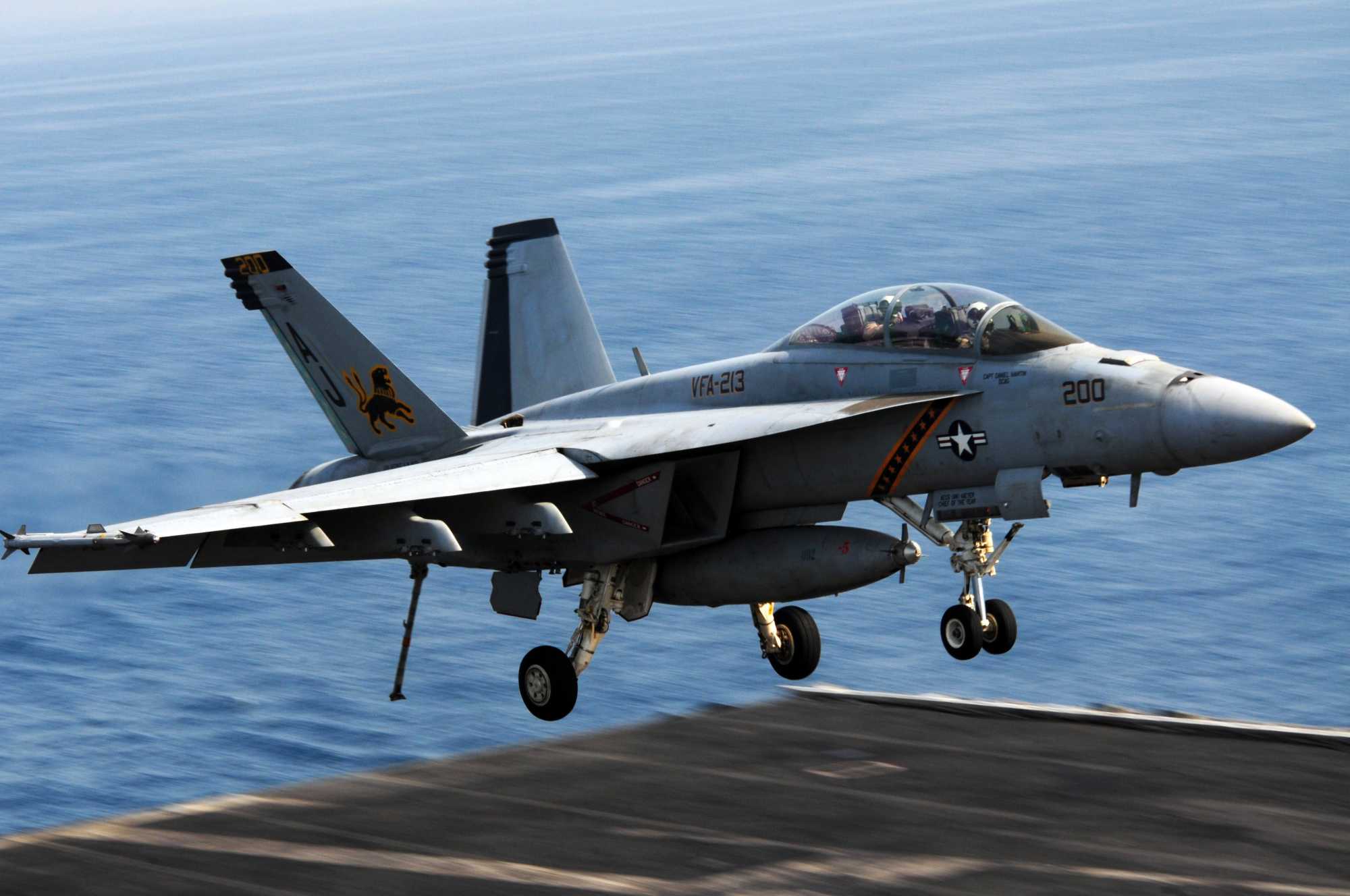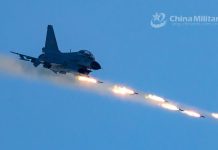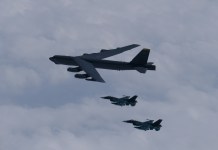The US Navy signaled in 2020 that it was planning to move beyond the fourth-generation F/A-18 Super Hornets and proposed ending the production line by 2023. Criticized then, the plans finally came true as Boeing made the big announcement.
On February 23, Boeing Aerospace announced that it had decided to close the production of the new-build F/A-18 Super Hornet fighter aircraft in late 2025.
“We are planning for our future, and building fighter aircraft is in our DNA,” Steve Nordlund, Boeing Air Dominance vice president, said in a statement.
“As we invest in and develop the next era of capability, we are applying the same innovation and expertise that made the F/A-18 a workhorse for the US Navy and air forces worldwide for nearly 40 years.” The Super Hornet is currently operated by US, Australia, and Kuwait and is on offer to India.
When the US Navy first floated the idea, it transitioned from deploying only the F/A-18 Super Hornet aboard its aircraft carriers to making way for the F-35C Lightning II jets. Therefore, the service suggested that the Navy slowly stop purchasing the aging Super Hornets.
Previously, the head of Navy acquisition James Geurts said the best way to support the ideal mix of F-18s and F-35s was to stop purchasing Super Hornets after the contract expires in Fiscal Year 2021 and instead concentrate on obtaining as many through the Service Life Modification (SLM) program each year, according to USNI report.
The aircraft, however, is special in many ways. The McDonnell Douglas F/A-18 Hornet was the first tactical aircraft for carrier duty and could perform air-to-air and air-to-ground operations. The US Marines ordered it as an F-18 fighter and the Navy an A-18 assault plane.
Combat Hardened Super Hornets
Hornets were inducted into service in January 1983. The USS Coral Sea’s Hornets participated in their first combat missions in 1986. Later, while undertaking an air-to-ground operation during the 1991 Persian Gulf War, Hornets shifted to fighter mode and engaged two Iraqi MiG-21s in air-to-air combat.
They then returned to attack mode and successfully finished their air-to-ground mission. In Afghanistan in 2001, Hornets offered nonstop battlefield coverage.
The F/A-18E/F Super Hornet made its first flight in November 1995. The F/A-18E/F has more maneuverability, range, and payload than the original Hornet and is 25% larger. Its engines are also more powerful. It was put into use by the American Navy in 1999.
On November 6, 2002, the Super Hornet took part in a strike on hostile targets in the “no-fly” zone over Iraq after flying from aboard the Abraham Lincoln carrier.
The first Block II Super Hornet, an updated Super Hornet featuring the first tactical multimode active electronically scanned array (AESA) radar in the world, was delivered by Boeing in April 2005. The F/A-18E/F Super Hornet has been the US Navy’s primary strike and air superiority aircraft.

Boeing delivered its first Block III F/A-18 Super Hornet to the US Navy in September 2021. The manufacturer describes this aircraft as the most advanced version of the Super Hornet and exceeds fourth-generation fighter capabilities. This is likely why the aircraft has been on offer to the Indian Navy.
When the US Navy first suggested that it would stop the production line of the Super Hornets, the suggestion was criticized by US lawmakers who argued that the move would be misleading given the strike-fighter shortfall that the Navy grapples with.
The service has admitted that the shortfall would not be resolved until at least 2031. However, despite this, the Navy has stopped buying the Super Hornets in its annual budget. Additionally, Boeing Aerospace which has been making the aircraft for four decades, is suspending production.
Indian Navy Decision Could Be Crucial
The company added that the deadline would be extended by two years, to 2027, in case the Indian Navy selects the F/A-18 Super Hornet Block III aircraft competing against the Dassault Rafale-Marine.
Boeing has been diligently pushing the sale of the Super Hornet to India last year and announced a road map to significantly increase its investments in line with the “Make in India” initiative and to transfer cutting-edge technologies to the Indian industry if the Indian Navy chooses its F/A-18 E/F Super Hornet fighter.
The aircraft underwent extensive trials at a shore-based facility in India, reinforcing its ability to operate off Indian carriers. However, if speculative reports are anything to go, the aircraft might not meet the cut for Indian Navy’s mega contract.
EurAsian Times reported in December last year that the Indian Navy had submitted an exhaustive report on both fighter jets to the Defense Ministry. As per the report, the French Rafale-M was “more suitable in meeting the operational requirements and criteria” than the Super Hornets.

Unless there is some serious dissonance among Indian navy and defense ministry officials, the advanced block III Super Hornet could eventually be pulled out of the race. The workhorse’s production line will eventually end in 2025.
The decision to end the production line corresponds to recent reports that the F/A-18 Super Hornets were aging at an unprecedented rate and performing poorly compared to the older Hornets on which they are based. Further, the US Navy has constantly questioned the viability of operating the Super Hornets.
Earlier, Rear Adm. Andrew Loiselle, who leads the chief of naval operation’s air warfare directorate (OPNAV N98), said, “Super Hornets are a 30-year airframe at 10,000 hours. So that takes us out to about 2055. And there isn’t a lot of analysis out there that supports fourth-generation viability against any threat in that timeframe.”
Starting in 2025, while Boeing will cease producing new F/A-18s, it plans to continue modernizing the current fleet and provide the Navy a service life modification program that will give Block II aircraft Block III capabilities. Also, the company will keep offering the enhanced electronic attack capability linked to the EA-18G Growler upgrade.
The Navy’s strategy to fill the gap in strike fighter capacity, which Chief Naval Officer Adm. Michael Gilday has predicted won’t be filled until at least 2030, depends heavily on the SLM program. However, despite all caution, the decision has been made – no more Super Hornets!
- Contact the author at sakshi.tiwari9555 (at) gmail.com
- Follow EurAsian Times on Google News





